Many diseases and disorders affect populations all around the world. While some of them are more common, others are not as known. In honor of Halloween, here are some spooky diseases and disorders that deserve to be addressed.
Sleep Paralysis
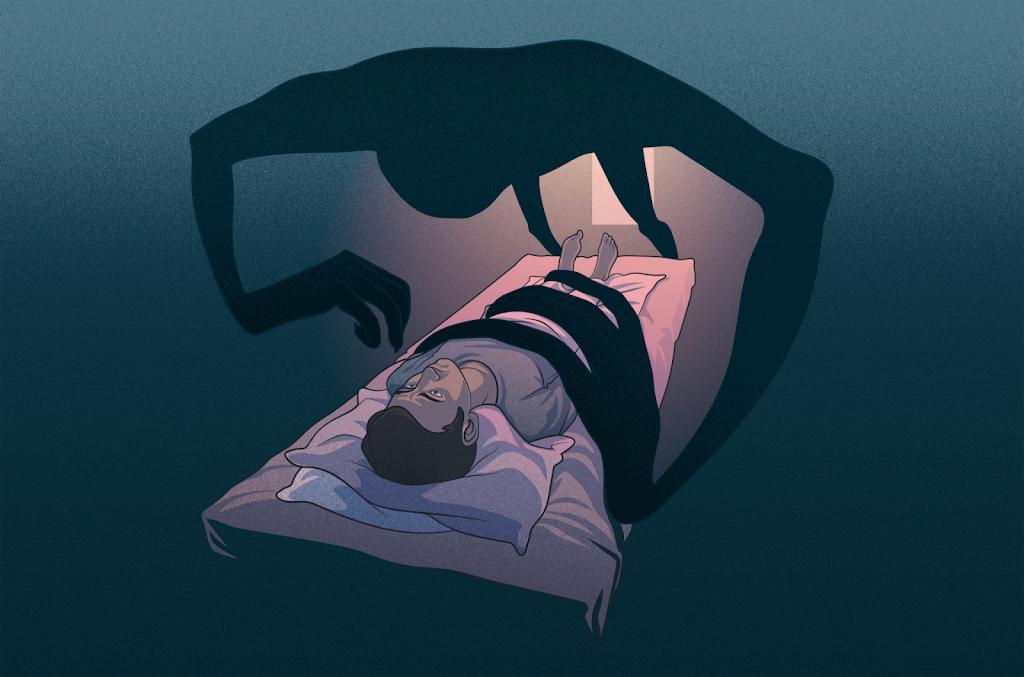
Sleep paralysis is a temporary inability that impairs speech and movement while falling asleep or waking up. It is characterized by a sensation of being awake but unable to move or talk, and it may last only a few minutes. Symptoms of sleep paralysis include a feeling of pressure, extreme fear, and inability to move or speak. Although the exact origins of sleep paralysis are unknown, it is believed to be associated with sleep disorders and certain mental health illnesses. The goal of treatment is to manage the problem by addressing its underlying causes and promoting better sleep hygiene. There are many medications for sleep paralysis. Citalopram is an antidepressant that helps regulate the sleep cycle. It is typically used by patients with narcolepsy with sleep paralysis. Since bipolar disorder is a common cause of sleep paralysis, many patients take lithium, an antimanic agent, which manages the root of the problem. There are also many foods that help combat sleep paralysis: fruits, vegetables, dairy products, etc. Foods that patients should avoid include tea, coffee, alcohol, and foods rich in sugars.
Sleepwalking

Sleepwalking, also known as somnambulism, is a sleep disorder in which a person walks or engages in other complex behaviors when they are mostly unconscious. Those who are sleep deprived, have a family history of the disorder, or are prone to frequent nightly awakenings are at a higher risk of experiencing it. It is more common in children than in adults. Sleepwalking occurs during non-REM (NREM) sleep, usually in stage 3 of the sleep cycle, which is also called deep sleep. Treatment is usually not necessary for isolated episodes of sleepwalking, which often don’t indicate any major issues. Repeated sleepwalking, however, can point to an underlying sleep disorder. Sleepwalking in adults has a higher chance of being confused with or coexisting with other sleep disorders as well as medical conditions. It is important to protect sleepwalkers from potential injuries when they sleepwalk. Though there is limited research on the condition, some researchers are examining the possibility that aberrant neuron activity and small seizures in the temporal lobe may be associated with it. It is advised that you speak with a healthcare professional if you are exhibiting sleepwalking symptoms. Managing the condition by addressing its underlying causes and enhancing sleeping patterns—also known as sleep hygiene—are two possible treatment approaches.
Cotard’s Syndrome
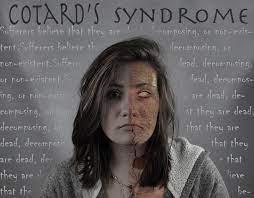
Cotard’s syndrome, or corpse syndrome, is a rare mental disorder, makes people believe that they are dead, have lost their organs, or do not exist. Although the exact source of this phenomena is unknown, brain injuries such as dementia, encephalopathy, epilepsy, migraine, multiple sclerosis, Parkinson’s disease, and strokes are thought to be the cause. It generally affects individuals in their early 50s, particularly those who abuse drugs or suffer from depression, anxiety, or schizophrenia. Brain damage can be identified on imaging tests that are used to detect strokes, tumors, blood clots, and an injury. Cotard’s syndrome can be treated with antipsychotics, antidepressants, and antianxiety medications. Another therapeutic approach is electroconvulsive therapy (ECT). It causes tiny electrical currents to flow across the brain, which may alleviate certain mental health problems by altering the chemistry of the brain.
Exploding Head Syndrome
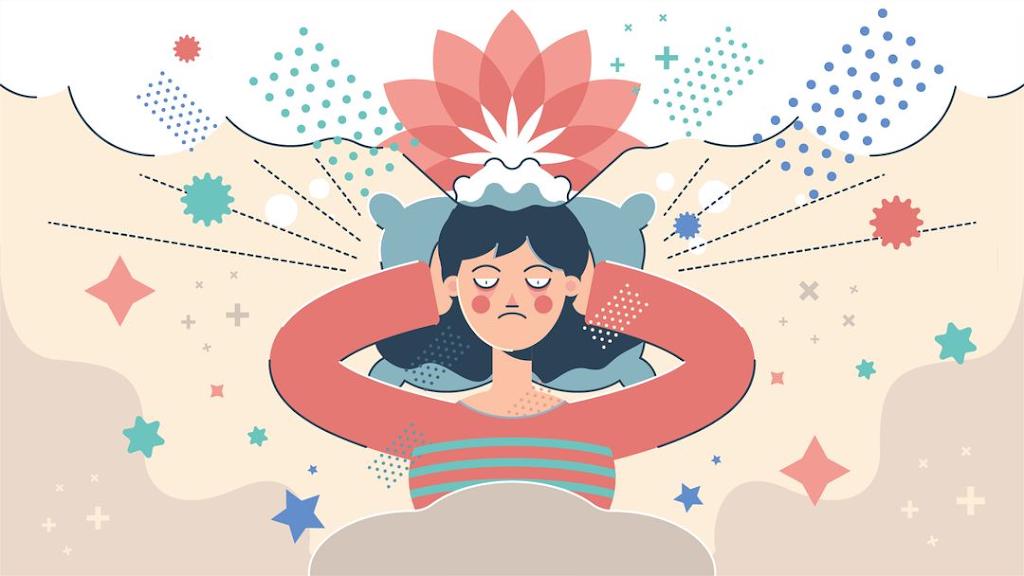
Exploding head syndrome is a sleep disorder that causes people to hear loud noises when they enter or exit deep sleep. Despite the fact that some people may experience anxiety, panic, or terror when they hear loud noises, exploding head syndrome is not a serious or life-threatening illness. The causes of exploding head syndrome are not fully understood, but it is believed to be linked to changes in brainstem activity and certain medical conditions such as migraines or ear problems. Though little is known about the illness, some researchers are examining the possibility that unusual neuron activity and small seizures in the temporal lobe may be associated with it. It is advised that you speak with a healthcare professional if you think you may have exploding head syndrome. Managing the condition by addressing its underlying causes and enhancing sleeping patterns—also known as sleep hygiene—are two possible treatment approaches. It is also possible to administer medications like lithium and citalopram to treat bipolar disorder and to control the sleep cycle, respectively.
Porphyria
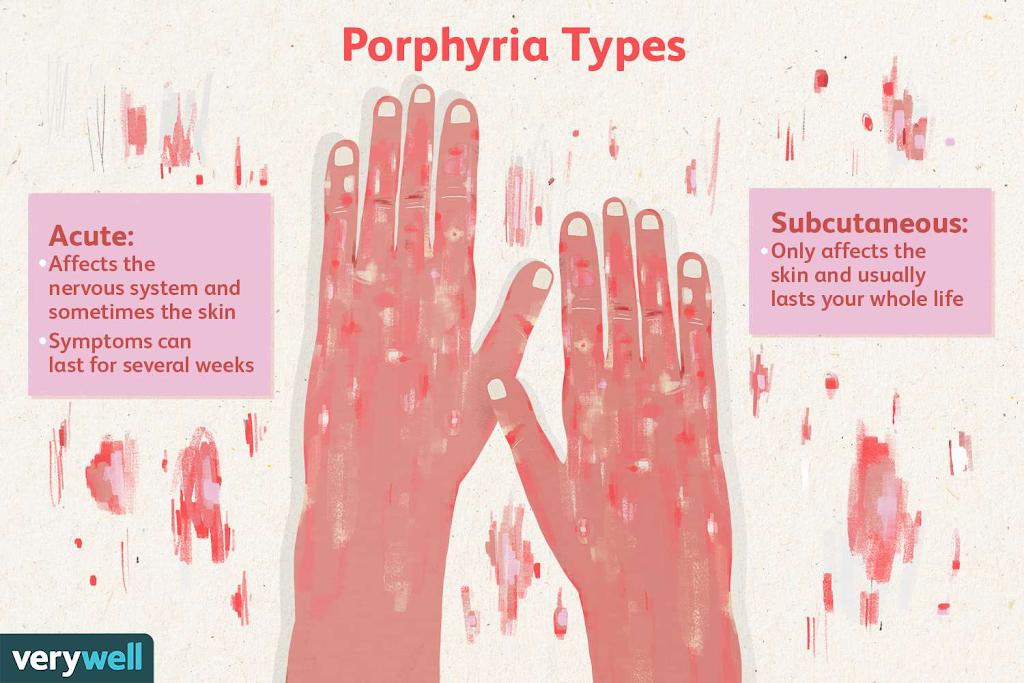
Porphyria is a group of rare genetic disorders that result from the accumulation of natural chemicals called porphyrins in the body. Heme, a component of hemoglobin that transports oxygen to the body’s tissues and organs, is made by porphyrins. The two main types of porphyrias are acute porphyrias and cutaneous porphyrias. Symptoms of porphyria vary depending on the specific type and severity of the condition, and they can include excruciating pain in the abdomen, chest, legs, or back; digestive issues like nausea, vomiting, and constipation; muscle pain, tingling, numbness, weakness, or paralysis; red or brown urine; mental abnormalities like anxiety, hallucinations, or mental disorientation; palpitations, or rapid, irregular heartbeats; breathing issues; elevated blood pressure; seizures; sensitive skin that burns when exposed to the sun or occasionally artificial light; abrupt, excruciating skin redness and swelling; blisters on exposed skin, mainly on the hands, arms, and face; thin, fragile skin that changes color; itching; and excessive hair growth in affected regions. Porphyria is typically inherited by a mutated gene that is passed on to a kid by one or both parents. While there is no known cure for porphyria, it can be managed with medication and certain lifestyle modifications. Treatment for symptoms depends on the type of porphyria. Medications such as Hemin and Vitamin D may be prescribed to help repress production of porphyrins and correct vitamin D deficiency respectively.
Alien Hand

Alien hand syndrome is a rare neurological disorder that results in uncontrollable motions in one or both hands. Damage to the brain’s corpus callosum or frontal lobe is thought to be the root cause of the illness. Alien hand syndrome manifests as involuntary motions, loss of control over the affected limb, and a detached feeling from the limb. Though little is known about the illness, some researchers are examining the possibility that abnormal neuron activity and small seizures in the temporal lobe may be associated with it. If you are experiencing symptoms of alien hand syndrome, it is recommended that you consult a healthcare provider. The disorder can be managed by treating the underlying causes and improving sleeping habits—also known as sleep hygiene. Medications such as Citalopram and Lithium can help regulate the sleep cycle and manage bipolar disorder, respectively.
Hemorrhaging in Eye
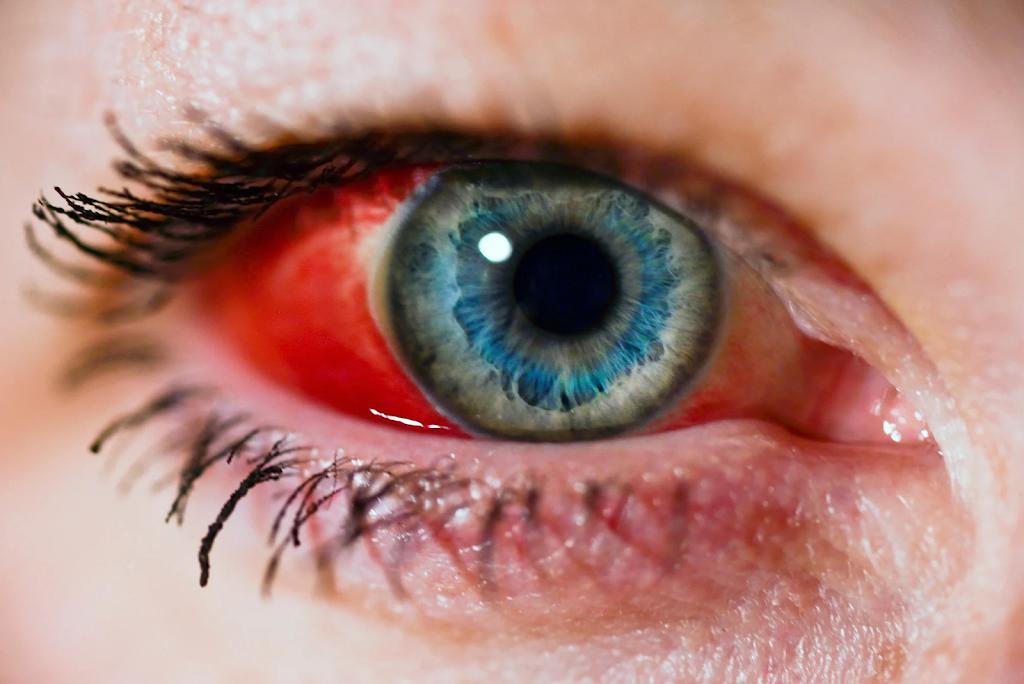
Subconjunctival hemorrhage is a disease that occurs when a tiny blood vessel bursts just below the conjunctiva, the transparent layer covering the eye. It can be brought on by events or behaviors that cause the fragile blood vessels in the eye to burst, or it can be brought on by traumatic injuries like tearing up, sneezing forcefully, straining, vomiting, or rubbing the eye, as well as side effects from blood thinners like Aspirin and Warfarin. Symptoms, which include a bright red patch in the sclera and scratchy feeling on the surface of the eye, may be alarming in appearance but are not harmful.
Body Movement after Death
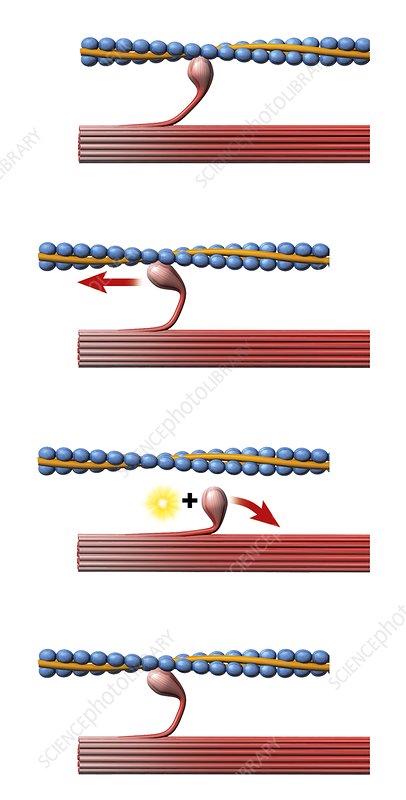
Rigor mortis is a natural post-mortem process that damages a deceased person’s muscles. several alterations that take place in a body after death. The body becomes rigid due to muscle stiffness and temporary immobilization.
The usual course of rigor mortis is as follows:
- Onset: Although the precise timing of rigor mortis can vary based on factors including individual characteristics and the surrounding temperature, it often starts a few hours after death. It generally starts in the smaller muscles and then spreads to larger muscle groups.
- Peak: Rigor mortis reaches its maximum stiffness at around 12 to 24 hours after death. The body becomes extremely rigid at this point, making it challenging to move the limbs.
- Resolution: After reaching its peak, rigor mortis gradually starts to dissipate. It typically begins to subside after about 24 to 48 hours, and the muscles become more relaxed. Although the length of rigor mortis varies, it usually goes away completely in 1 to 3 days.
The precise processes underlying rigor mortis are associated with the post-mortem biochemical alterations in muscle cells. Adenosine triphosphate (ATP), which is required for muscle contraction, is no longer produced once a person passes away. As ATP levels drop, the muscles become unable to relax, causing the stiffening associated with rigor mortis. It’s important to note that rigor mortis is a temporary and reversible condition. The body eventually loses its rigor mortis and becomes more relaxed as it continues to go through post-mortem changes and decomposition. When preparing a body for burial or cremation, mortuary staff and forensic professionals use this procedure to determine the time of death. Reflexive muscle movements can occasionally occur soon after death, but they are often involuntary and not a sign of life. They are not deliberate, coordinated motions, but they can be brought on by the body’s residual electrical activity.
Phantom-Limb Syndrome

Phantom limb syndrome is a condition that causes people who have had a limb amputated to experience discomfort or sensations in the missing limb. A recent medical advance has shown that at least one woman has had significant relief from phantom limb pain. She now has a functioning bionic prosthetic hand that can feel some sensations and help her do about 80% of what she used to do with both hands. Though there is not much known about the illness, some researchers believe there is a possibility that irregular neuron activity and minor seizures may have a relation to it. If you are experiencing symptoms of phantom limb syndrome, it is recommended that you consult a healthcare provider. Treatment options may include managing the disorder by treating the underlying causes and improving sleeping habits also termed as sleep hygiene. Medications such as Citalopram and Lithium may also be prescribed to help regulate the sleep cycle and manage bipolar disorder, respectively.
Stevens-Johnson Syndrome

The Stevens-Johnson Syndrome is a condition that leads to blisters, lesions, and horrifying rashes on the skin throughout the body. Overdosing on anticonvulsants, a developing class of medications that help control seizures, appears to be the reason. These medications include, for instance, lamotrigine, carbamazepine, phenytoin, phenobarbitone, allopurinol (particularly if taken in excess of 100 mg daily), and sulfonamides: cotrimoxazole and sulfasalazine. The worst thing is that there may be discomfort over the weeks or months it takes to heal. You are more likely to contract this illness if you have any of the following conditions: HIV infection, compromised immune system, cancer, a family history of Stevens-Johnson syndrome, a history of the condition.
Necrotizing Fasciitis
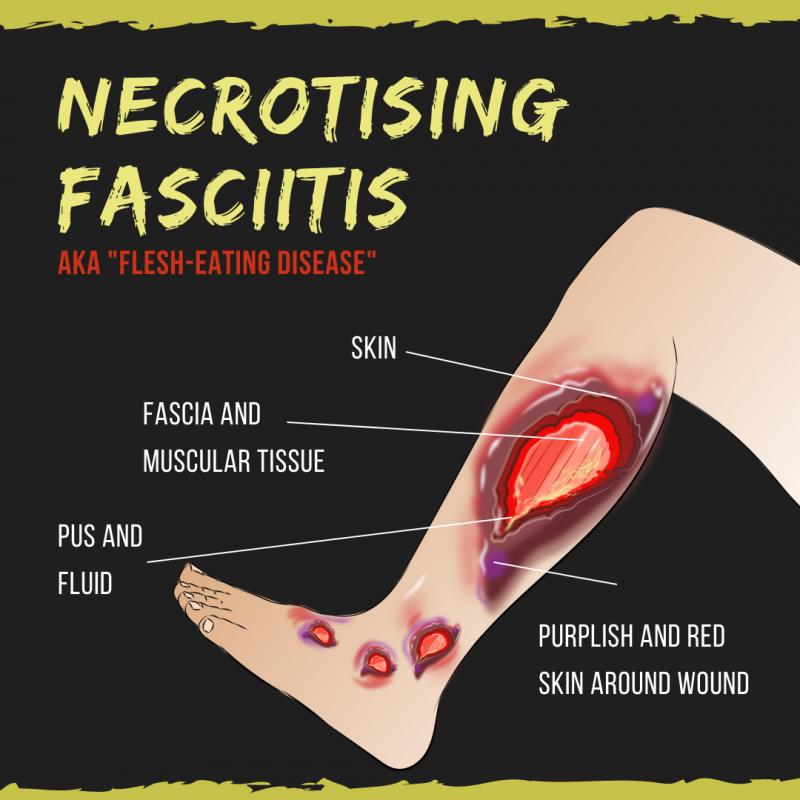
Known as the “Flesh Eating Disease,” this highly painful ailment is brought on by aggressive skin and soft tissue infections (SSTIs), which result in the necrosis (cell death) of the subcutaneous (fat tissue beneath the skin) and muscle fascia (the protective sheath around the muscle). As the illness spreads quickly, symptoms start to show. These include blisters, fever, exhaustion, and agony that is more severe than one may anticipate given the appearance of the wound are some of the symptoms of this. You must proceed straight to an intensive care center for treatment, where you will receive a bacterial IV (though this varies from case to case).
Purpura Fulminans
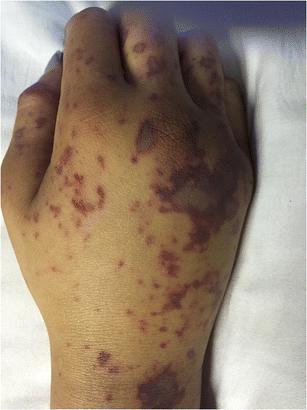
This extremely painful condition is known as skin necrosis, in which the skin rapidly bleeds and dies. This illness is brought on by excessive blood clotting, which is subsequently followed by bleeding and more clotting. Thrombocytopenia (a lack of blood platelets) and purpuric lesions over a variety of skin sites are among symptoms of this illness that may manifest. Urinary tract infection is another probable sign. Numerous bacteria, including Meningococcus (which can cause meningitis, an inflammation of the brain lining), Gram-negative bacteria (which can cause pneumonia), Staphylococcus (which can cause minor skin infections), Streptococcus (which can cause strep throat), and Rickettsia organisms (which are found in fleas and can cause fevers) are possible causes of this diseases.
Elephantiasis
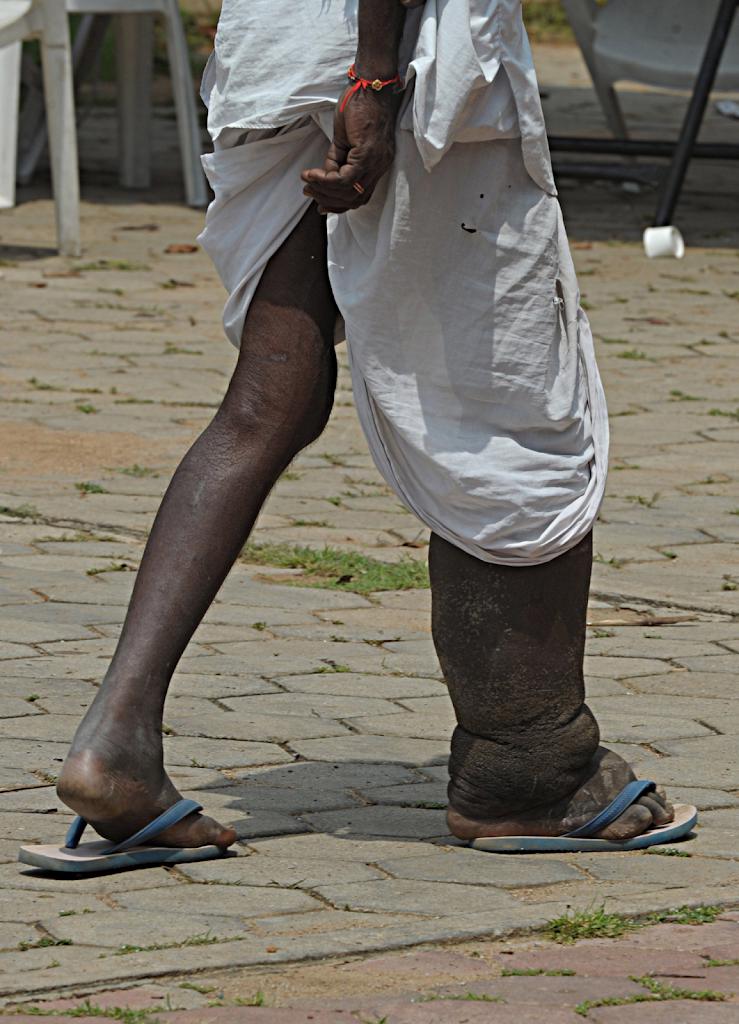
Elephantiasis is a viral disease that mostly affects the kidneys and lymphatic system and is brought on by a parasitic infection carried by mosquitoes. The infected mosquito delivers roundworm larvae to the victim. After they have spread, the larvae chew away at your tissue, causing significant harm. Depending on the specific situation, the diseased skin may be pitted, dry, thick, ulcerated, darker than usual, and more. The most depressing aspect of this illness is how long it takes to cure; even with advanced medical technology, it would still take eight weeks on average.
Harlequin Ichthyosis
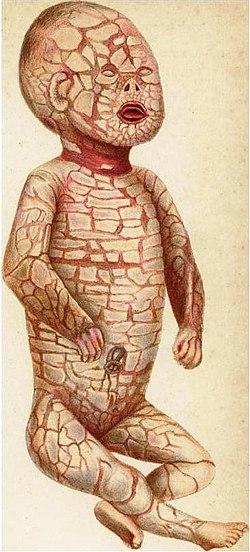
Harlequin Ichthyosis targets children. Children with this illness are born prematurely and have rough, pale, fractured skin. Fissures to the underlying tissue appear in the skin. These skin anomalies limit limb movement and alter the appearance of the lips, nose, ears, and eyelids. In the first few weeks of life, infants with Harlequin Ichthyosis lose fluids and may potentially have infections. Thus, in the majority of cases, this sickness may turn out to be fatal. A mutation in the ABCA12 gene results in ichthyosis in harlequins. This gene produces a protein that aids in the healthy growth of skin cells. Severe skin defects arise from inadequate epidermis formation caused by a loss of functional ABCA12 protein.
Toxic Epidermal Necrolysis (TEN)
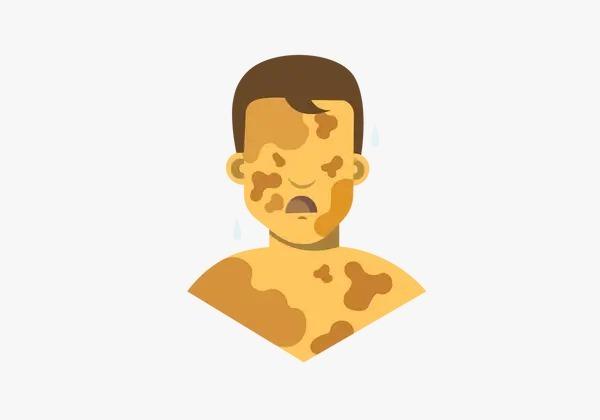
Toxic epidermal necrolysis is the peeling of skin in patches. This condition leaves large areas of exposed tissue, which are highly susceptible to infection. Additionally, fluid leaks from the injured sites due to skin loss. Toxic epidermal necrosis is most frequently caused by medication reactions, most commonly from antibiotics.
Common signs include:
- Raw areas of skin
- Discomfort
- Fever
- Condition spread to eyes, mouth/throat, and genitals/urethra/anus
Treatments include:
- Antibiotics
- Intravenous immunoglobulin G
- Ointments and protective bandages
- Isolation to prevent infection
Pantothenate Kinase-Associated Neurodegeneration (PKAN)
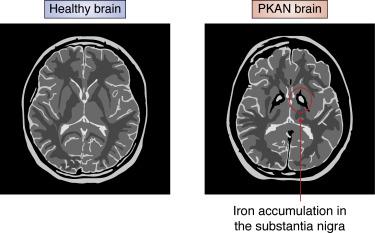
PKAN is caused by the anomalous accumulation of iron in specific regions of the brain. This neurological condition causes a significant impairment of motor function.
These include:
- Involuntary muscle spasms
- Rigidity
- Trouble with walking
- Speech (dysarthria)
- Vision loss
- Loss of intellectual function (dementia)
- Psychiatric symptoms
- Behavioral problems, personality changes, behavioral issues, and depression
Fortunately, this disease is extremely rare, affecting about 1-3 people per million worldwide, and its most common cause is a mutation. This illness first appears in childhood and worsens with time. Since this disease is incurable, taking medication will only relieve symptoms.
Leprosy (Hansen’s Disease)
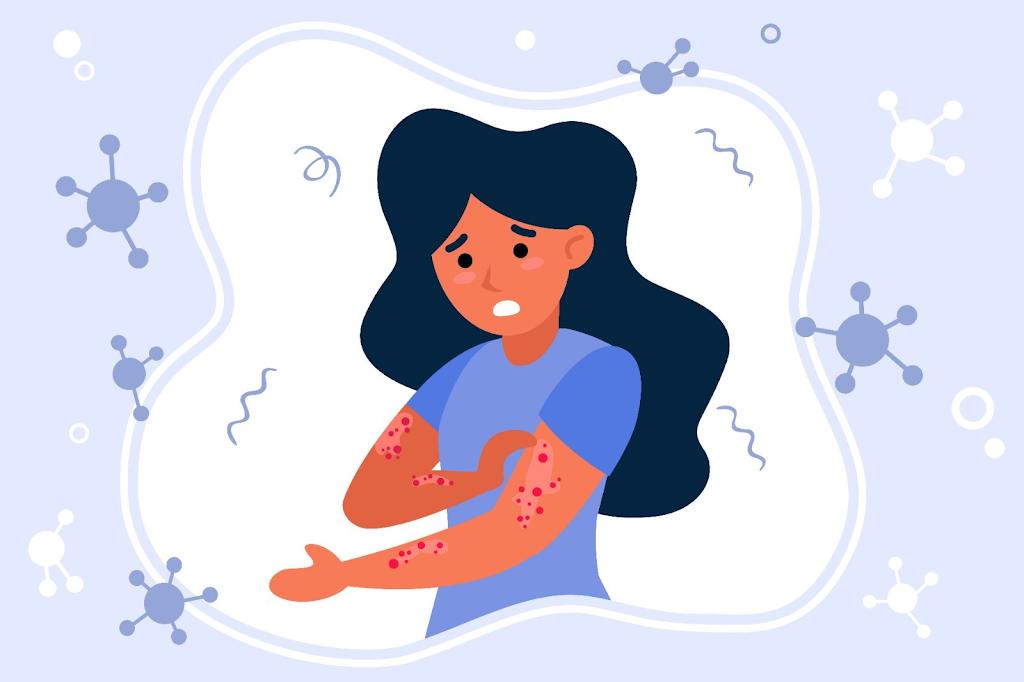
Leprosy, also called Hansen’s disease, is a chronic infectious disease caused by Mycobacterium leprae. The spread of this bacterium is suspected to be through small insects like roaches.
Symptoms include:
- Discolored patches of skin
- Growths on the skin.
- Thick, stiff or dry skin.
- Painless ulcers on the soles of feet.
- Painless swelling or lumps on the face or earlobes.
- Loss of eyebrows or eyelashes
Treatments include:
- Dapsone (antibacterial and anti inflammatory)
- Rifampicin (antibacterial)
- Clofazimine (stops reproduction of bacteria by binding to guanine bases)
Proteus Syndrome
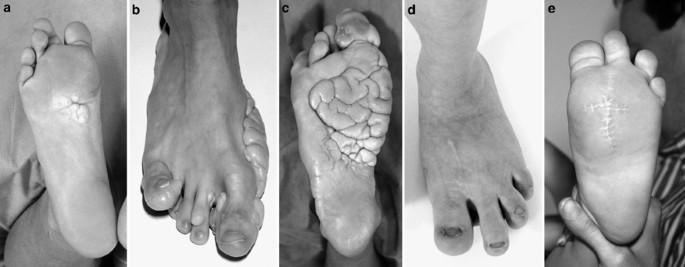
The Proteus Syndrome is the usual overgrowth of certain body parts. This disease is caused by a mutation in the AKT1 gene, which controls cell division.
It can cause excessive growth on:
- Bones, skin, organs, tissues
Because of its asymmetry, the growth can produce imbalance by affecting both the left and right sides of your body separately. This syndrome typically doesn’t show in newborns until they are 6 to 18 months old. Some people may be more prone to acquiring cancers, blood clots, or even neurological conditions. Proteus Syndrome has no known cure; most affected individuals use surgery to alleviate symptoms, although they usually die before turning 20.
Symptoms of this syndrome include:
- Scoliosis
- Irregular development of arms, legs, skull and spine
- Inhibited mobility of the joints
- Abnormal skin growths: lesions
Fibrodysplasia Ossificans Progressiva (FOP)
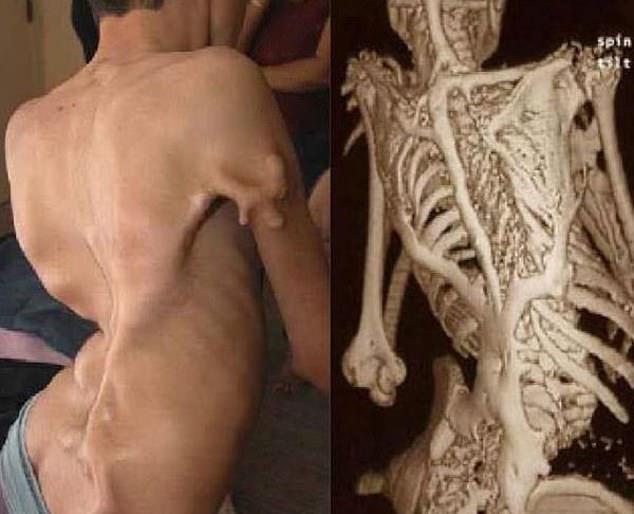
FOP is the progressive ossification of tissues, or their transformation into bone tissue. The gene ACVR1 controls the ossification and cell division of bone tissue. FOP is caused by mutations in the ACVR1 gene, which ossifies and affects joints, impairing movement. As the name suggests, Ossificans Progressiva is progressive; it often first affects the neck and shoulders before moving on to the limbs. It typically occurs in early childhood. Breathing difficulties may result from rib cage ossification, which makes it more difficult for the lungs to expand. Any trauma to an individual with FOP may result in periods of inflammation and swelling of the muscles, which are then followed by an increase in the rate of ossification. FOP does not have a treatment.
Paraneoplastic Pemphigus
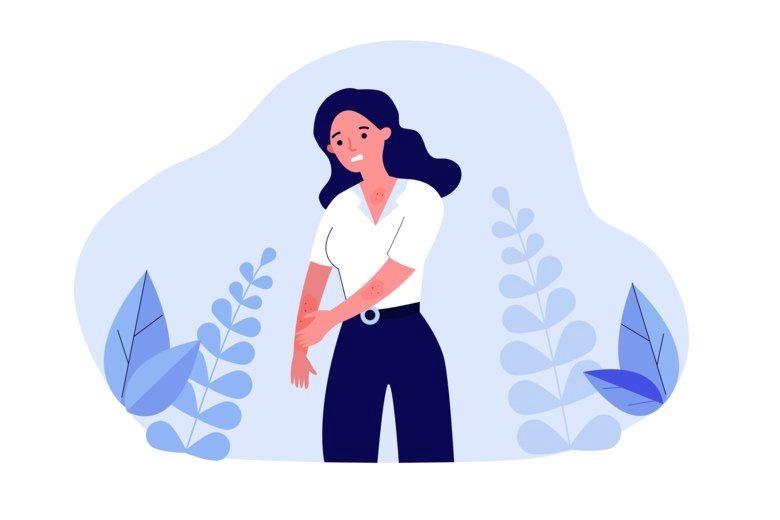
Paraneoplastic pemphigus is a rare autoimmune disease. It is almost always associated with confirmed malignancy. Tumor antigens are hypothesized to trigger a cellular immune response in addition to a humoral one. This affects the epithelial tissue.
Symptoms:
- Necrotic tissues
- Neoplastic Cancer
- Painful sores on the mouth, face, skin.
- Developed rashes
- Involves respiratory tract, which can lead to severe complications
- Blisters
- Erosions
- Spots
- Papules
- Plaques
Treatments:
- Corticosteroids (steroids)
- Azathioprine
- Cyclosporine
- mycophenolate mofetil
As it is linked with cancer, it can cause fatality. Mortality rates approach 90%.
Hypertrichosis

Hypertrichosis, or werewolf syndrome, is a non-fatal, painless illness. It is the overabundance of hair growth. Lasers can be used to destroy the hair follicle at its base in order to treat this syndrome.
Types of Hair growth:
- Lanugo is a soft, fine, light-colored layer of hair that covers a fetus in the womb.
- Vellus hair is typically blonde, thin, and grows on cheeks and arms/legs of kids before thick dark terminal hair grows.
- Terminal hair growth is thicker, longer, and darker than the other forms and is the type that grows on your head.
This disease can show up in stages:
- Congenital hypertrichosis lanuginosa: The fine layer of hair from fetus form does not go away and continues to grow.
- Congenital hypertrichosis terminalis: This is the characteristic “werewolf syndrome” form of the condition where a person experiences abnormal—and often stark. Har can be dark and thick.
- Nevoid hypertrichosis: This form may also occur later in life but is usually present at birth. It’s a less severe form of hypertrichosis where the abnormal hair growth is limited to relatively small, isolated patches. Such as a unibrow.
Scientists are unsure of the cause but the following may contribute to unusual hair growth:
- HIV/AIDS
- Acromegaly
- Lichen simplex
- Dermatomyositis
- POEMS syndrome
